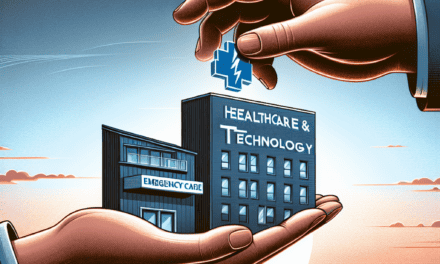Judge Issues Temporary Halt on $11B Cuts to Public Health Funding
In a significant legal development, a judge has issued a temporary halt on proposed cuts amounting to $11 billion in public health funding. This decision has sparked a nationwide conversation about the implications of such cuts on public health systems, the communities they serve, and the broader healthcare landscape. This article delves into the various dimensions of this issue, exploring the potential impacts of the cuts, the legal arguments surrounding the case, and the broader context of public health funding in the United States.
The Context of Public Health Funding in the U.S.
Public health funding in the United States has been a contentious issue for decades. The funding landscape is shaped by a complex interplay of federal, state, and local government budgets, as well as private sector contributions. Understanding the context of public health funding is crucial to grasping the implications of the recent judicial decision.
Public health funding is primarily allocated to various programs aimed at disease prevention, health promotion, and emergency preparedness. These programs are essential for maintaining the health of populations, especially in times of crisis, such as during the COVID-19 pandemic. The funding sources can be categorized as follows:
- Federal Funding: The federal government provides significant funding through programs like the Centers for Disease Control and Prevention (CDC) and the Health Resources and Services Administration (HRSA).
- State Funding: States allocate their budgets to public health initiatives, which can vary widely based on local priorities and economic conditions.
- Local Funding: Local health departments often rely on city or county budgets, which can be heavily influenced by local economic conditions and political decisions.
- Private Sector Contributions: Non-profit organizations and private foundations also play a role in funding public health initiatives, often filling gaps left by government funding.
In recent years, public health funding has faced significant challenges, including budget cuts, shifting political priorities, and the increasing burden of chronic diseases. The proposed $11 billion cuts would exacerbate these challenges, potentially leading to a decline in public health services and an increase in health disparities across communities.
The Legal Battle Over Public Health Funding
The recent judicial decision to halt the $11 billion cuts to public health funding stems from a legal challenge brought forth by various advocacy groups and public health officials. The plaintiffs argue that the cuts would violate legal obligations to provide adequate health services to the population, particularly vulnerable communities.
The legal arguments presented in this case revolve around several key points:
- Constitutional Rights: The plaintiffs assert that access to healthcare is a fundamental right, and significant cuts to public health funding would infringe upon this right.
- Impact on Vulnerable Populations: The cuts are expected to disproportionately affect low-income communities, minorities, and other marginalized groups who rely heavily on public health services.
- Public Health Emergency: Given the ongoing challenges posed by the COVID-19 pandemic and other public health crises, the plaintiffs argue that now is not the time to reduce funding.
- Legal Precedents: The case references previous rulings that have upheld the importance of maintaining adequate public health funding as a matter of public interest.
The judge’s decision to issue a temporary halt reflects the seriousness of these arguments and the potential consequences of the proposed cuts. The legal proceedings are expected to continue, with both sides preparing for a more comprehensive examination of the issues at hand.
Implications of the Cuts on Public Health Services
The proposed cuts to public health funding would have far-reaching implications for public health services across the country. These implications can be categorized into several key areas:
- Reduction in Services: Many public health programs, including immunization campaigns, maternal and child health services, and disease surveillance, would face significant reductions in funding, leading to decreased service availability.
- Increased Health Disparities: Vulnerable populations, including low-income families and racial minorities, would be disproportionately affected by the cuts, exacerbating existing health disparities.
- Impact on Emergency Preparedness: Public health departments play a critical role in emergency preparedness and response. Cuts to funding could hinder their ability to respond effectively to public health emergencies, such as pandemics or natural disasters.
- Job Losses in Public Health Sector: Significant cuts to funding would likely lead to layoffs and reduced hiring in public health departments, further straining the workforce.
- Long-term Health Outcomes: The long-term consequences of reduced public health funding could manifest in increased rates of chronic diseases, higher healthcare costs, and a decline in overall population health.
For example, during the COVID-19 pandemic, public health departments were instrumental in vaccine distribution, contact tracing, and community education. A reduction in funding could severely limit their capacity to respond to future health crises, leaving communities vulnerable.
Case Studies: The Impact of Previous Funding Cuts
To understand the potential consequences of the proposed $11 billion cuts, it is essential to examine case studies from previous funding reductions in public health. These examples illustrate the real-world impacts of budget cuts on public health systems and community health outcomes.
One notable case occurred in 2012 when the state of Texas implemented significant cuts to its public health budget. The cuts resulted in:
- Closure of Clinics: Many community health clinics were forced to close, leading to reduced access to essential services such as family planning, immunizations, and preventive care.
- Increased Unintended Pregnancies: The reduction in family planning services led to a spike in unintended pregnancies, highlighting the critical role of public health funding in reproductive health.
- Rise in Infectious Diseases: The cuts contributed to a resurgence of infectious diseases, such as whooping cough and measles, as vaccination rates declined.
Another example can be found in the state of Michigan, where budget cuts in 2015 led to a significant reduction in funding for lead poisoning prevention programs. The consequences were dire:
- Increased Lead Exposure: The cuts resulted in fewer inspections and interventions in homes with lead hazards, leading to increased lead exposure among children.
- Long-term Health Effects: Children exposed to lead are at risk for developmental delays, learning disabilities, and other long-term health issues.
- Increased Healthcare Costs: The long-term health consequences of lead exposure ultimately resulted in higher healthcare costs for families and the state.
These case studies underscore the critical importance of sustained public health funding and the potential consequences of cuts. The proposed $11 billion reductions could lead to similar outcomes, jeopardizing the health and well-being of communities across the nation.
The Future of Public Health Funding: A Call to Action
The temporary halt on the $11 billion cuts to public health funding presents an opportunity for stakeholders to engage in meaningful dialogue about the future of public health financing. As the legal proceedings unfold, it is essential to consider the broader implications for public health policy and funding priorities.
Several key actions can be taken to advocate for sustainable public health funding:
- Advocacy and Awareness: Public health advocates must continue to raise awareness about the importance of public health funding and its impact on community health outcomes.
- Engagement with Policymakers: Engaging with local, state, and federal policymakers to advocate for increased funding and support for public health initiatives is crucial.
- Community Mobilization: Grassroots movements can mobilize communities to demand better public health funding and services, emphasizing the need for equitable access to healthcare.
- Research and Data Collection: Continued research on the impacts of public health funding cuts can provide valuable data to support advocacy efforts and inform policy decisions.
- Collaboration Across Sectors: Collaboration between public health agencies, healthcare providers, and community organizations can help create a unified front in advocating for sustainable funding.
As the nation grapples with ongoing public health challenges, it is imperative to recognize that public health funding is not merely a budget line item; it is an investment in the health and well-being of communities. The recent judicial decision serves as a reminder of the importance of protecting public health funding and ensuring that all individuals have access to the services they need.
Conclusion
The temporary halt on the proposed $11 billion cuts to public health funding is a critical moment in the ongoing struggle for adequate public health resources in the United States. As this legal battle unfolds, it is essential to recognize the broader implications of funding cuts on public health services, vulnerable populations, and community health outcomes.
Through a comprehensive understanding of the context of public health funding, the legal arguments at play, and the potential consequences of cuts, stakeholders can engage in meaningful advocacy for sustainable public health financing. The case studies presented highlight the real-world impacts of funding reductions, underscoring the need for continued investment in public health initiatives.
Ultimately, the future of public health funding will depend on collective action from advocates, policymakers, and communities. By prioritizing public health funding, we can work towards a healthier, more equitable society for all.





